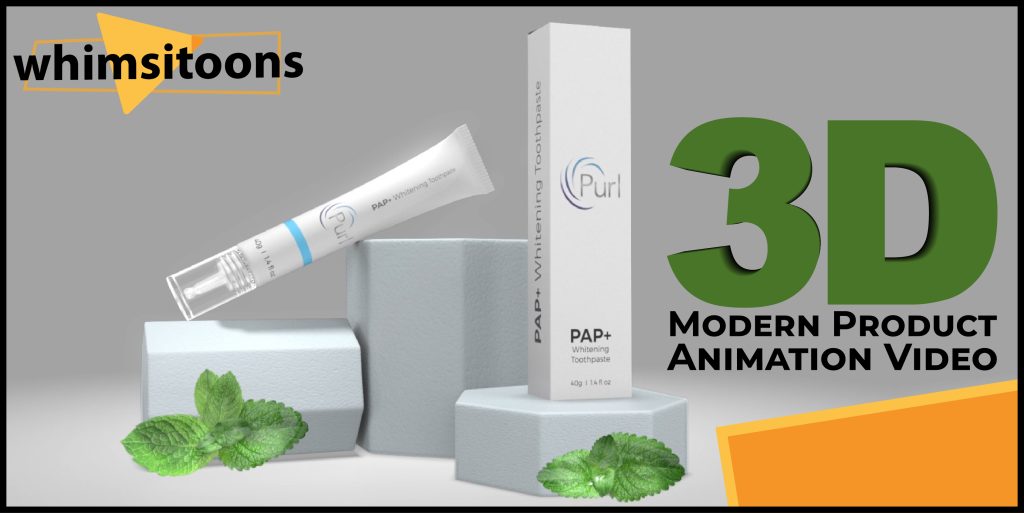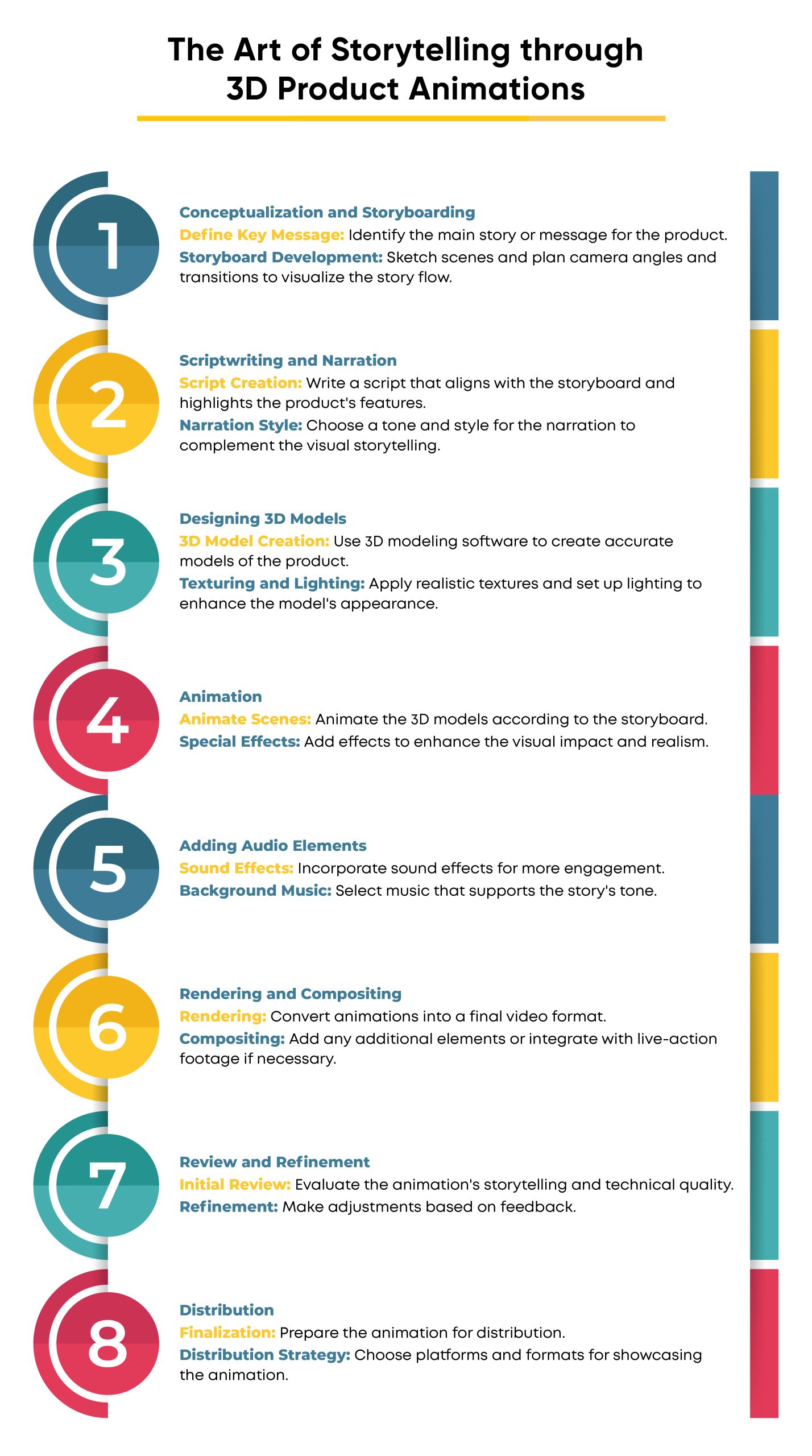Impact of 3D Modern Product Animation Video on Your Business

Businesses are continuously looking for new methods to display their products and engage their customers.
One such groundbreaking tool that has emerged in recent years is 3D Modern Product Animation Video.
This technology has revolutionized product presentations, offering a dynamic and immersive experience that traditional photography or 2D graphics simply cannot match.
Get to acknowledge all about 3D product animation by exploring its benefits, applications, and best practices, ensuring you leverage this powerful tool to its fullest potential.
What is 3D Modern Product Animation Video?
Modern 3D Product Animation Video refers to the technique of using three-dimensional graphics to create a moving, visual representation of a product.
This technology enables businesses to present their products in a highly realistic and detailed manner, often surpassing the limitations of real-world physics and camera work.
The result? A captivating and engaging experience that not only showcases the product in all its glory but also tells a compelling story.
The Evolution of Product Presentation
- Traditional Photography: Once the go-to method for product presentation, offering static images with limited engagement.
- 2D Graphics and Animation: Provided more flexibility and creativity but lacked depth and realism.
- Modern 3D Product Animation Video: Combines the best of both worlds, offering dynamic, realistic, and highly engaging product visuals.
Why Choose 3D Animated Product Videos?
Enhanced Realism and Detail
- Incredible Precision: The 3d product videos showcase every aspect of your product with stunning detail.
- Realistic Textures and Lighting: Create lifelike representations that are almost indistinguishable from real objects.
Total Creative Control
- Beyond Physical Limitations: Defy the constraints of real-world physics and camera work.
- Customizable Environments: Tailor every aspect of the environment to complement your product.
Increased Engagement and Conversion
- Captivating Visuals: Grab and hold the attention of your potential customers.
- Effective Storytelling: Turn your product presentation into an engaging narrative.
Cost-Effective in the Long Run
- Reusable Assets: 3D models and environments can be used for multiple projects.
- No Physical Prototypes Needed: Save on the cost of creating and photographing physical prototypes.
Implementing 3D Animation in Your Marketing Strategy
Understanding Your Audience
- Demographics: Tailor your animation with the help of 3D product animation services to appeal to your specific target audience.
- Preferences: Incorporate elements that resonate with your audience’s likes and interests.
Crafting a Compelling Narrative
- Storytelling: Use 3D animation to tell a story, not just showcase a product.
- Emotional Connection: Create a narrative that connects emotionally with your audience.
Keeping Up with Trends and Innovations
- Latest Techniques: Stay updated with the latest advancements in 3D animation.
- Innovative Approaches: Experiment with new styles and techniques to stand out.
Best Practices for 3D Product Animation
To get the best product animation videos, there are a few practices that you need to master:
Attention to Detail
- High-Quality Modeling: Ensure your 3D models are of the highest quality.
- Texture and Lighting: Pay close attention to textures and lighting for a realistic effect.
Smooth Animation
- Fluid Motion: Ensure that your animations are smooth and natural.
- Realistic Physics: Simulate real-world physics for believable motion.
Effective Integration
- Website Integration: Seamlessly integrate your animations into your website for an immersive experience.
- Social Media Compatibility: Ensure your animations are optimized for various social media platforms.

The Technical Side of 3D Product Animation
It’s crucial to understand the technical intricacies that make these visuals so compelling.
This section explores the key technical aspects, from software selection to rendering techniques, and the skillset required to create high-quality 3D animations.
Choosing the Right Software For 3D Product Animations
- Industry Standards: Software like Autodesk Maya, Blender, and Cinema 4D are among the industry’s leading tools. Each offers unique features, such as Maya’s advanced character rigging and Blender’s open-source versatility.
- Specialized Features: Depending on your project, you might require software with specialized features. For instance, Autodesk 3ds Max is renowned for its architectural visualization capabilities.
Modeling and Texturing
- 3D Modeling: This is the process of creating a 3D representation of your product. It requires a keen eye for detail to ensure the model is an accurate and detailed representation.
- Texturing: This involves adding surface textures and colors to the 3D model. High-quality textures are crucial for realism, making the product appealing and lifelike.
Animation and Motion
- Rigging: For products with moving parts, rigging is essential. It involves creating a ‘skeleton’ that animates the model.
- Motion Graphics: Integrating motion graphics can enhance the visual storytelling, especially for highlighting product features or demonstrating functionality.
Lighting and Rendering
- Lighting: Good lighting is essential in 3D animation. It brings out the detail in the model and sets the overall mood of the scene.
- Rendering: This is the process of generating the final image from the prepared scene. Techniques like ray tracing can produce highly realistic images but require significant computational power.
Skillset Required
- Technical Skills: A strong understanding of the chosen 3D software, along with knowledge in modeling, texturing, and lighting, is essential.
- Artistic Sensibility: Beyond technical know-how, having an artistic eye helps in creating visually appealing animations.
- Problem-Solving Ability: Working with complex software and intricate details often requires innovative problem-solving skills.
Keeping Up with Technology
- Continuous Learning: There are always new developments in the field of 3D animation. Staying updated with the latest software updates, techniques, and industry trends is crucial.
- Experimentation: Don’t be afraid to experiment with new tools and techniques. This not only leads to unique creations but also keeps your skills sharp.
Collaboration and Communication
- Teamwork: Often, creating a 3D animation is a team effort. Effective collaboration and communication among artists, animators, and marketers are vital.
- Feedback and Iteration: The process is iterative. Regular feedback and revisions ensure the final product aligns with the marketing goals and audience expectations.
Table: Comparing 3D Animation with Traditional Methods
| Aspect | Traditional Photography | 2D Graphics | 3D Product Animation |
| Realism | Moderate | Low | High |
| Engagement | Low | Moderate | High |
| Flexibility | Low | High | Very High |
| Cost Over Time | Moderate | Moderate | Economical |
| Storytelling Potential | Low | Moderate | High |
Conclusion
Leveraging the capabilities of 3D Modern Product Animation Video is a game-changer for enhancing your product’s appeal and strengthening your marketing initiatives.
It’s important to remember that this technology is not merely about displaying a product; it’s about crafting a narrative that connects deeply with your audience and leaves a memorable impact.
Should you be prepared to revolutionize how your products are seen and engage your audience in unprecedented ways, Whimsitoons, a 3d product animation video company, stands ready to actualize your dreams.
Our proficiency in state-of-the-art 3D animation ensures that we provide not only animations but also captivating narratives that touch the hearts of your audience.
Seize the opportunity to spotlight your products in a manner they truly deserve. Embark on your path to extraordinary 3D product animation by visiting Whimsitoons today!
FAQs
Q 1: How much does it cost to create a 3D product animation video?
The cost varies depending on the complexity of the project, but it is generally more economical in the long term compared to traditional photography.
Q 2: How long does it take to create a 3D animation?
The timeframe can range from a few weeks to several months, depending on the project's complexity and detail level.
Q 3: Do I need a physical prototype of my product to create a 3D animation?
No, one of the benefits of 3D animation is that it does not require a physical prototype.
Q 4: Can 3D animation be used for any type of product?
Absolutely! 3D animation is versatile and can be adapted to virtually any product.
Q 5: How can I ensure my 3D animation stands out?
Focus on high-quality modeling, realistic textures and lighting, fluid motion, and creative storytelling to make your animation truly stand out.
Q 6: What are the benefits of using 3D animation in animated videos and presentations?
3D animation in animated videos and presentations offers a visually immersive experience, enhancing the clarity and appeal of the message. It enables intricate product demonstrations and dynamic visual storytelling, which are not feasible with traditional 2D formats, thus making the content more engaging and memorable for the audience.
Q 7: How much does 3D product video production cost?
The cost of 3D product video production typically ranges from $1,000 to $5,000 per minute, depending on the complexity, quality, and detailing required. rnPrices may vary based on the studio, software, and additional features like voiceovers or animation.










